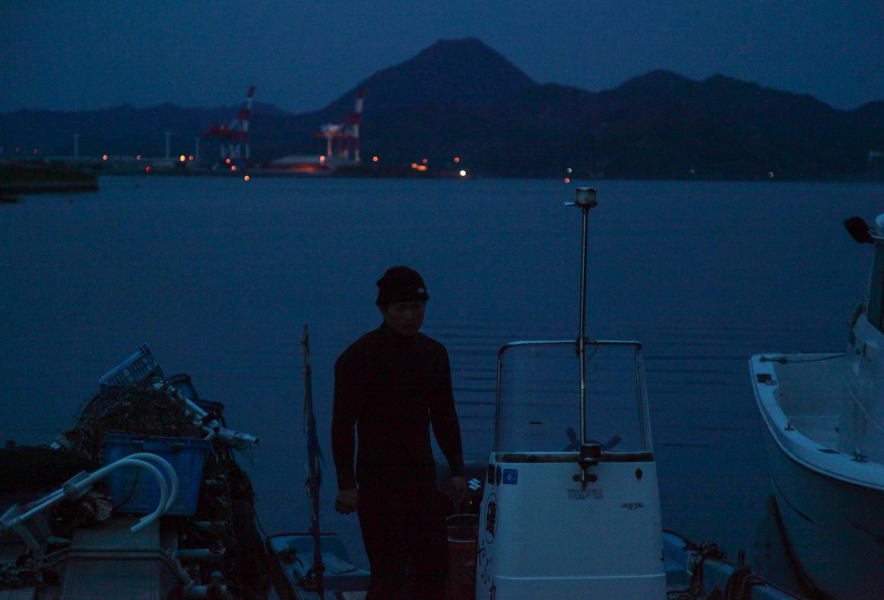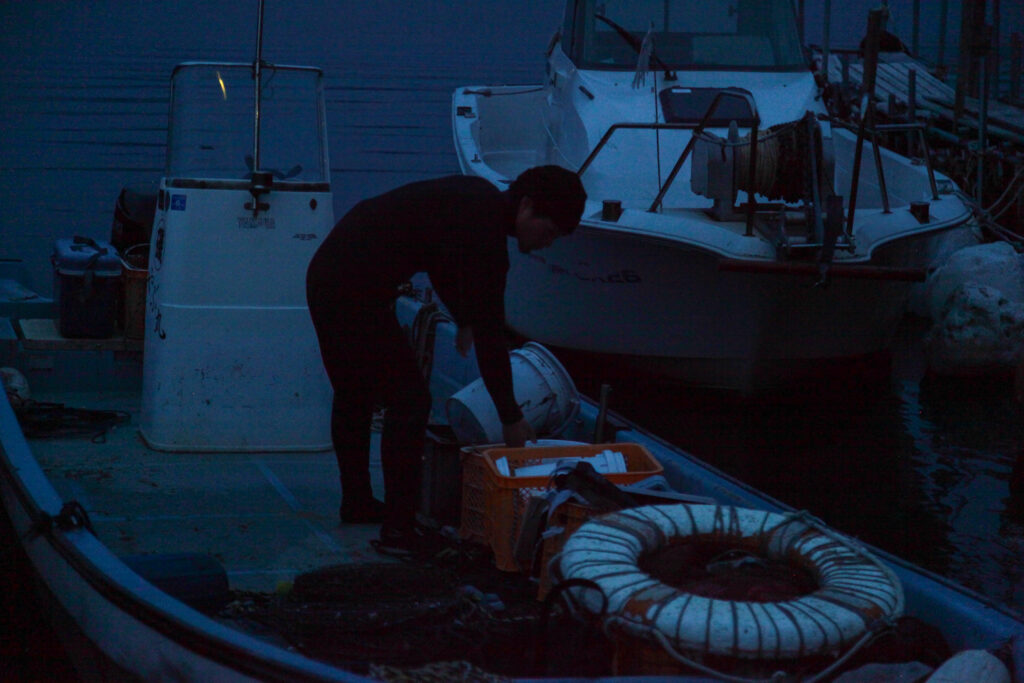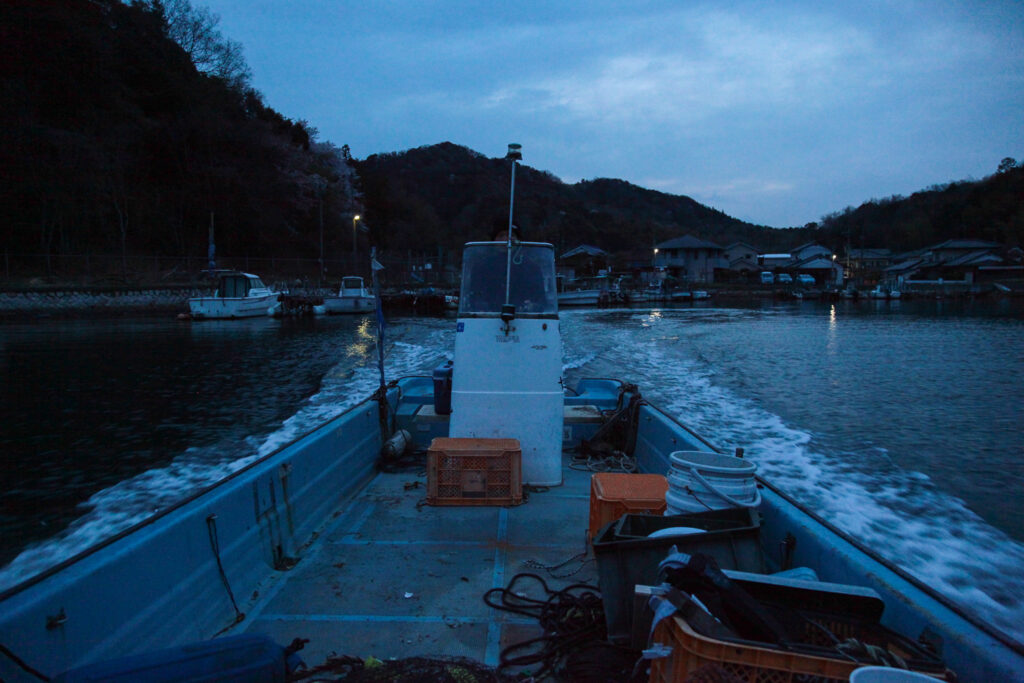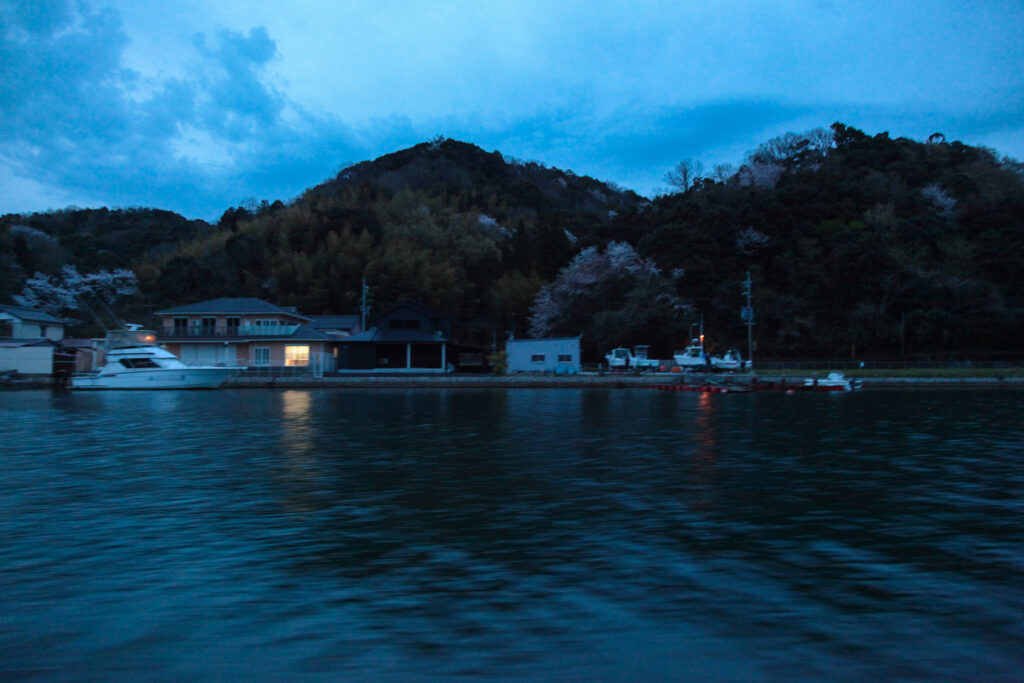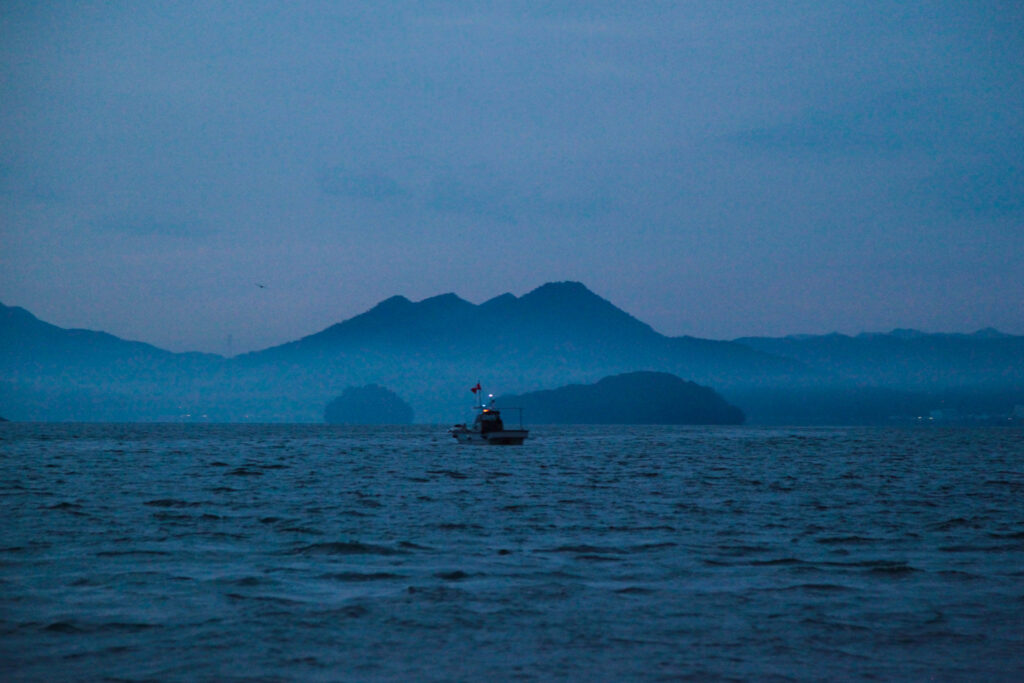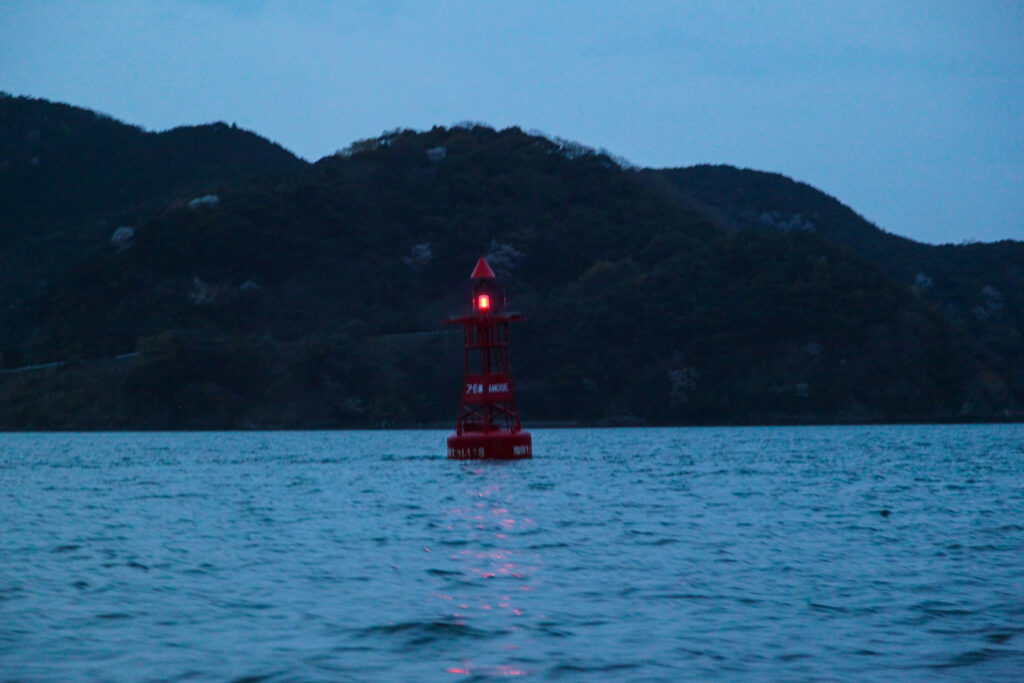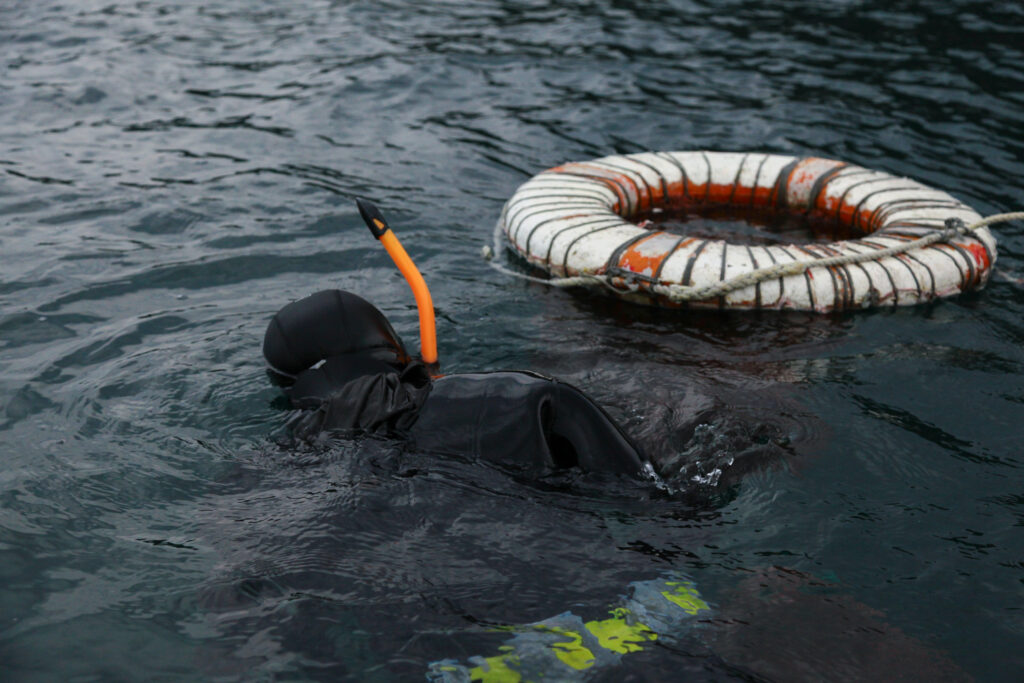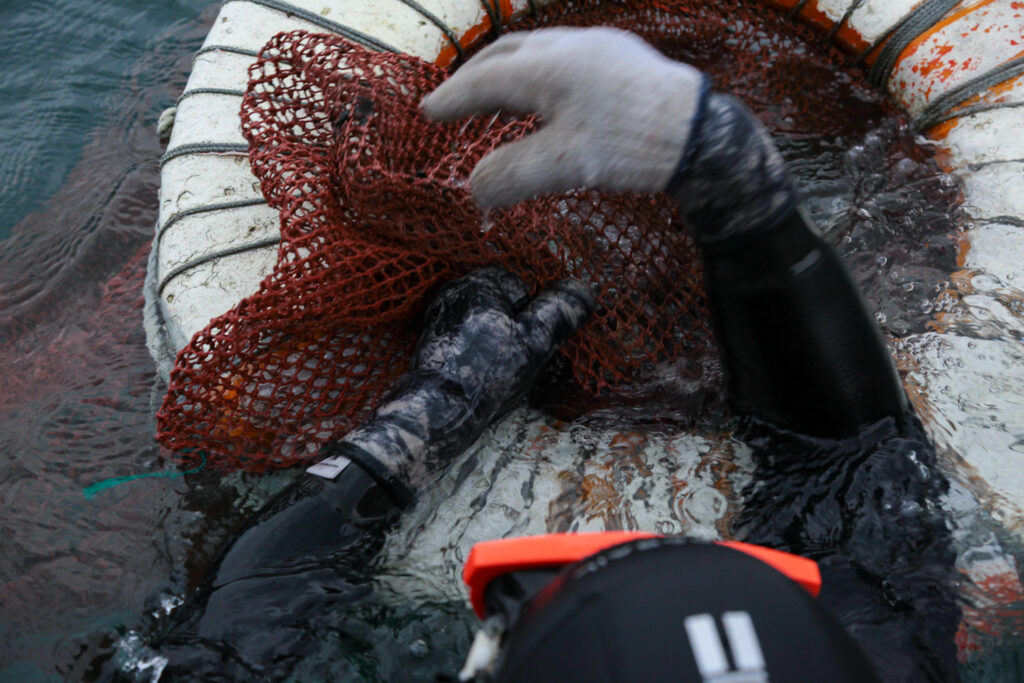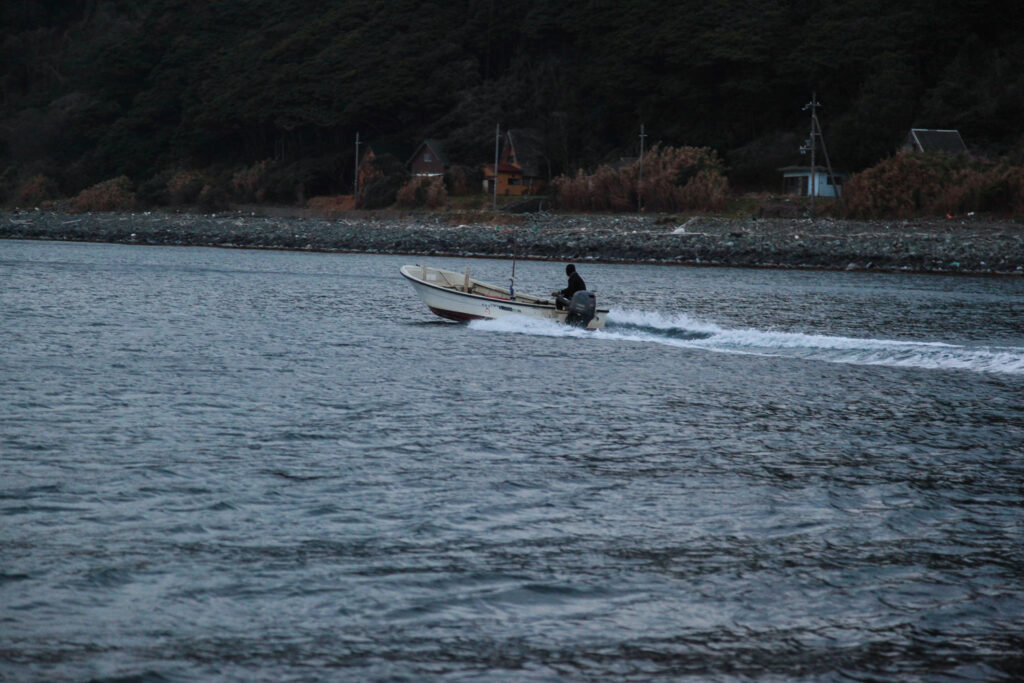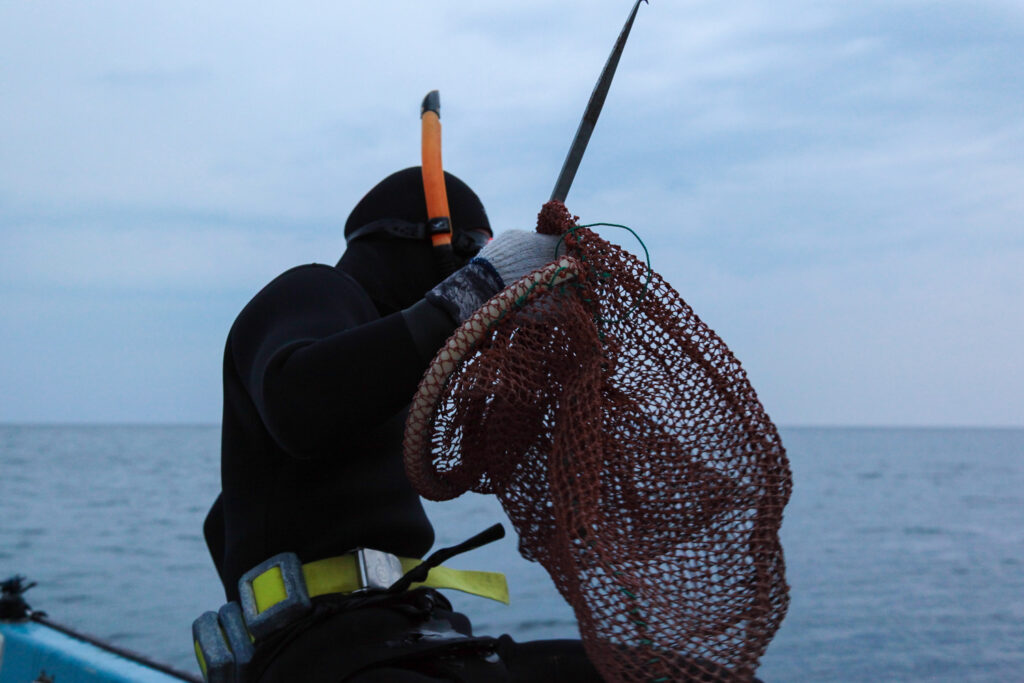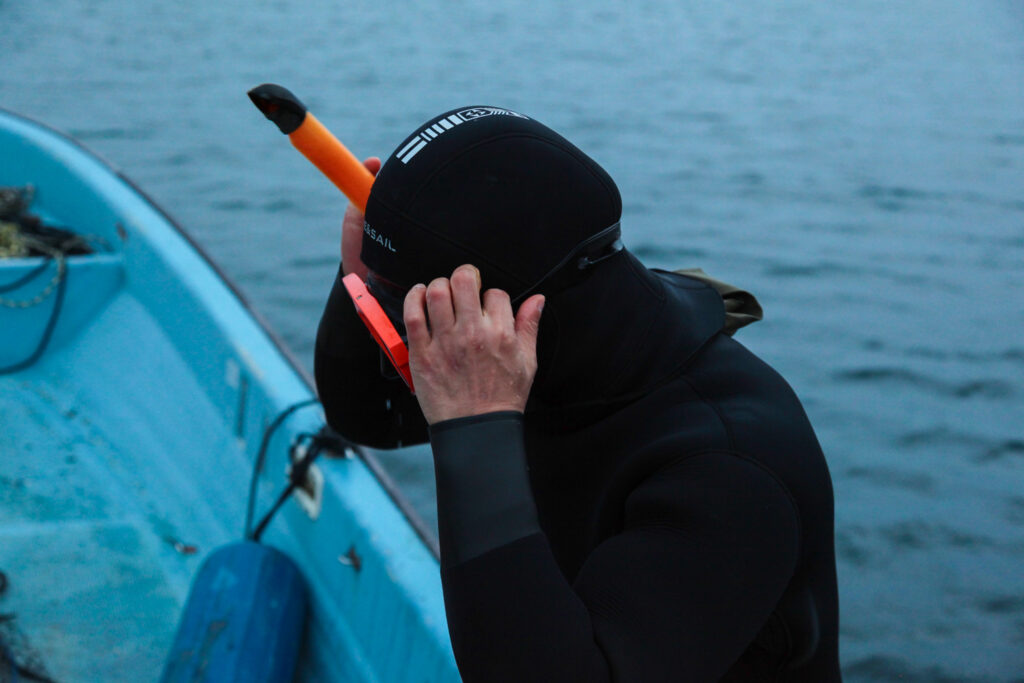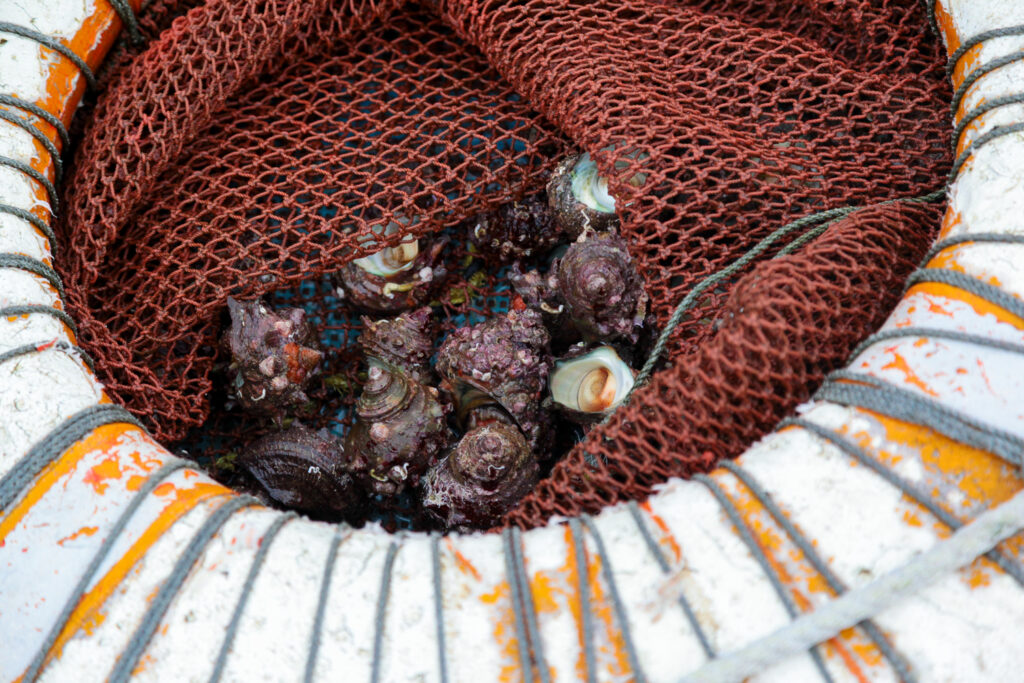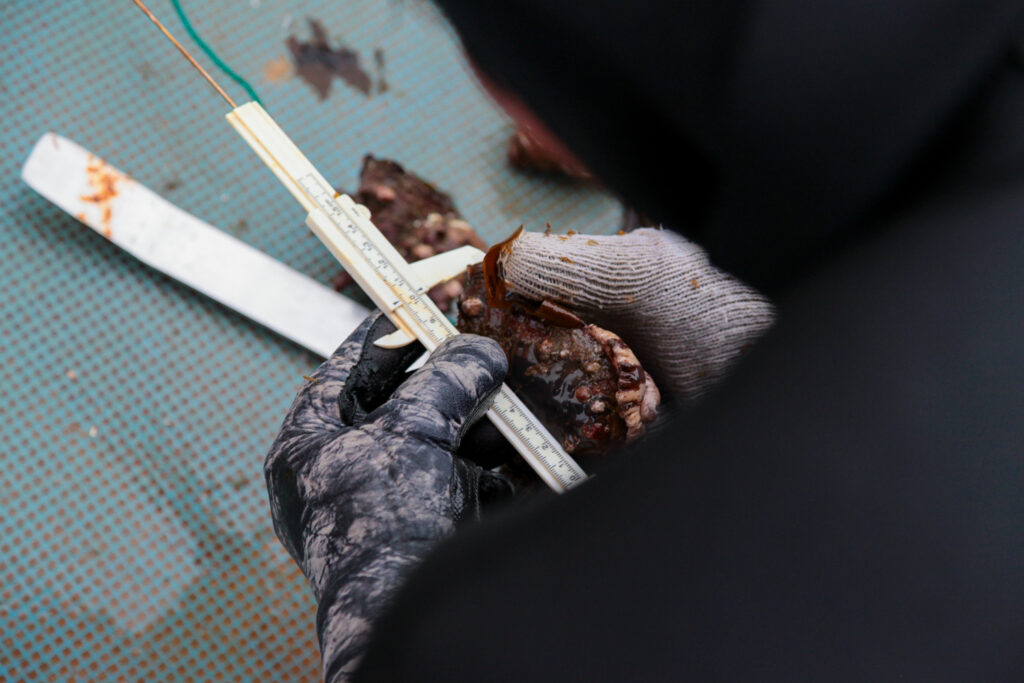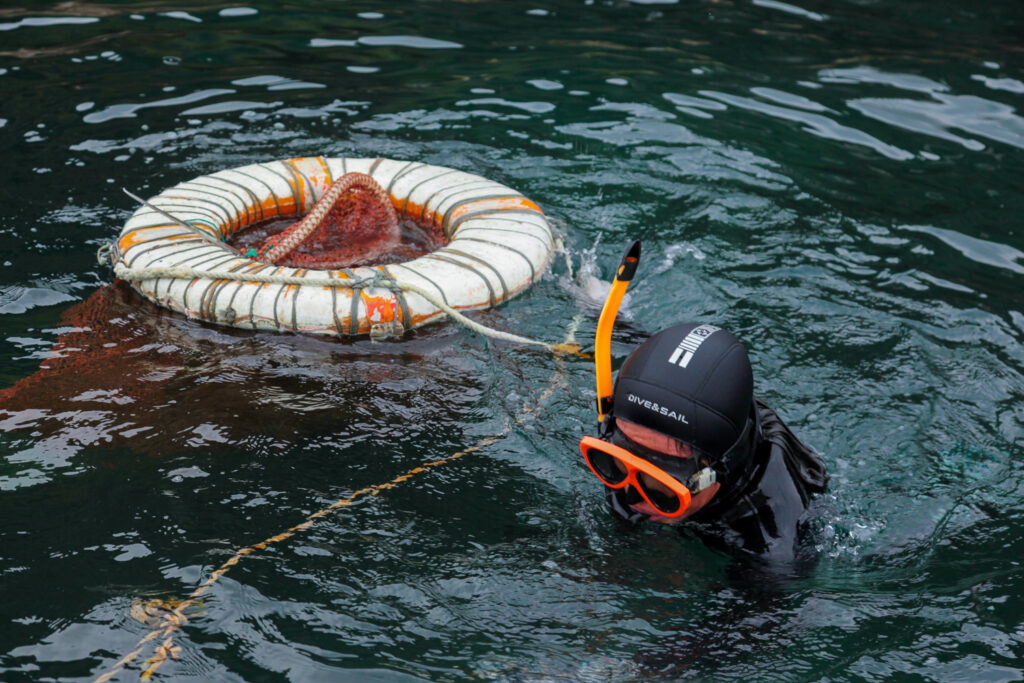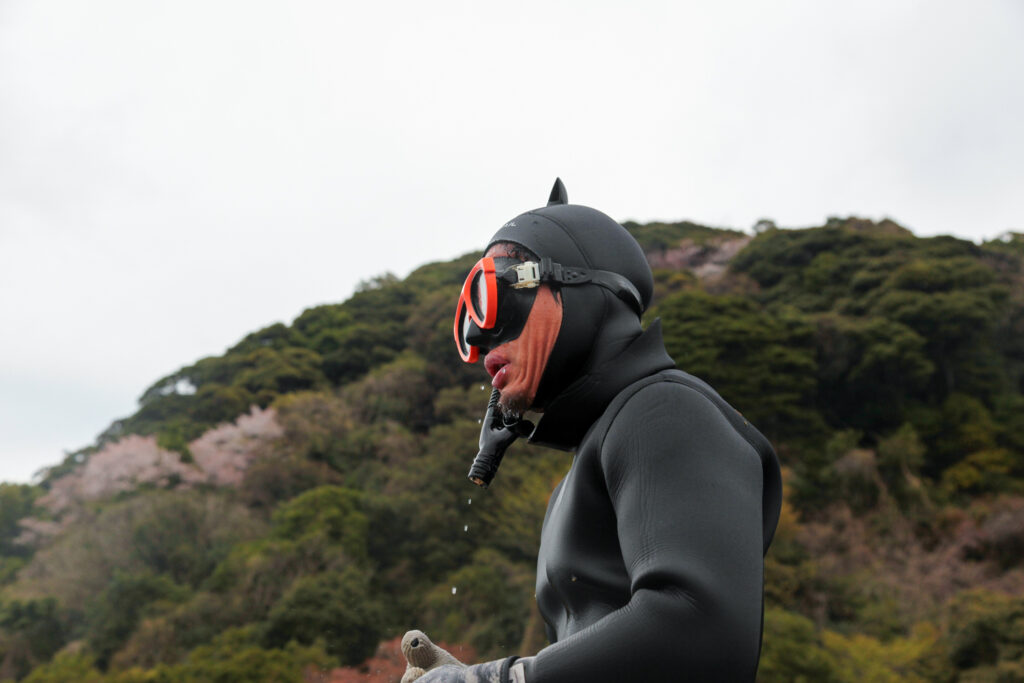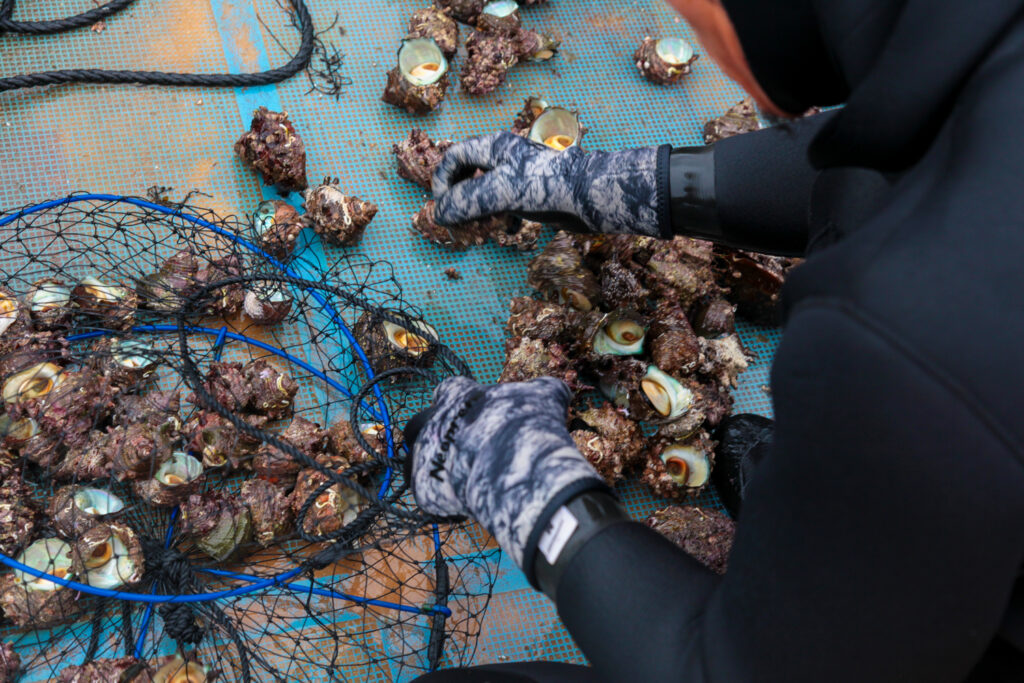観光だけではない仕事の魅力
京都北部に位置する、海の街舞鶴。日本海(若狭湾)に面しており、自衛隊艦艇が並ぶ舞鶴湾と旧海軍の軍需品の保管庫として建てられた「舞鶴赤れんがパーク」は、観光地として毎年多くの人が訪れている。今回はそんな観光スポットではなく、京都の海産物の供給を支える、漁師の仕事をスナップ。
舞鶴市の漁師の仕事は、定置網漁、刺し網漁、かご漁など、色々な漁法があるが、今回取材できたのは、素潜り漁の漁師。朝の5時過ぎに待ち合わせて夜明けからの漁に同行させていただいた。
港までは車で10分ほど車で走ったところ。観光用の港とは違い、船がところ狭しと並んでいる。
The Attraction of the Job Goes Beyond Just Tourism
Maizuru is a seaside town located in the northern part of Kyoto Prefecture. Facing the Sea of Japan (Wakasa Bay), Maizuru Bay, where Japan Self-Defense Force vessels are lined up, and “Maizuru Red Brick Park,” built as a storage facility for military supplies of the former Imperial Japanese Navy, attract many visitors annually as tourist destinations. However, this time, instead of focusing on such tourist spots, we took a look at the work of fishermen who support the supply of seafood to Kyoto.
Fishermen in Maizuru City employ various fishing methods, including set net fishing, gillnet fishing, and pot fishing. Our focus this time was on a free diver fisherman. We met around 5:00 AM and accompanied them on their fishing trip starting at dawn.
The port was about a 10-minute drive away. Unlike the ports for tourism, boats were packed tightly together here.
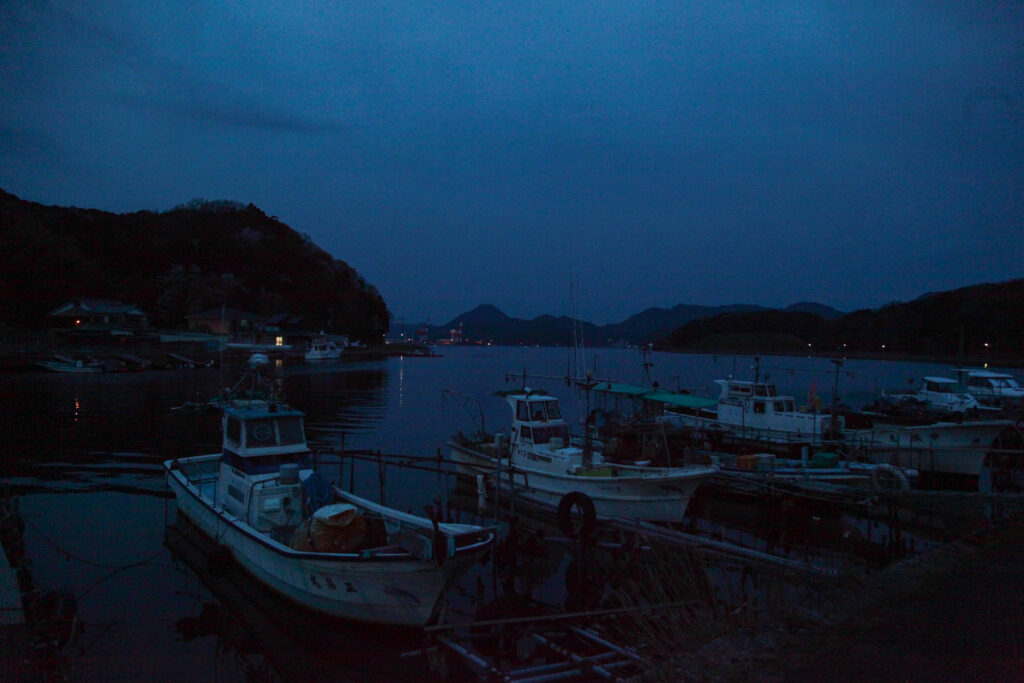
遊ぶように仕事をする
段々と明るくなっていく海を進む。動いている大型客船を間近で見られることはなく、大きな航跡波で乗っていた船が大きく揺れた。
Making work feel like play
We sailed into the sea as it gradually brightened. We encountered a large active passenger ship at close range, a sight not often seen. The large wake it created made the boat we were on rock heavily.
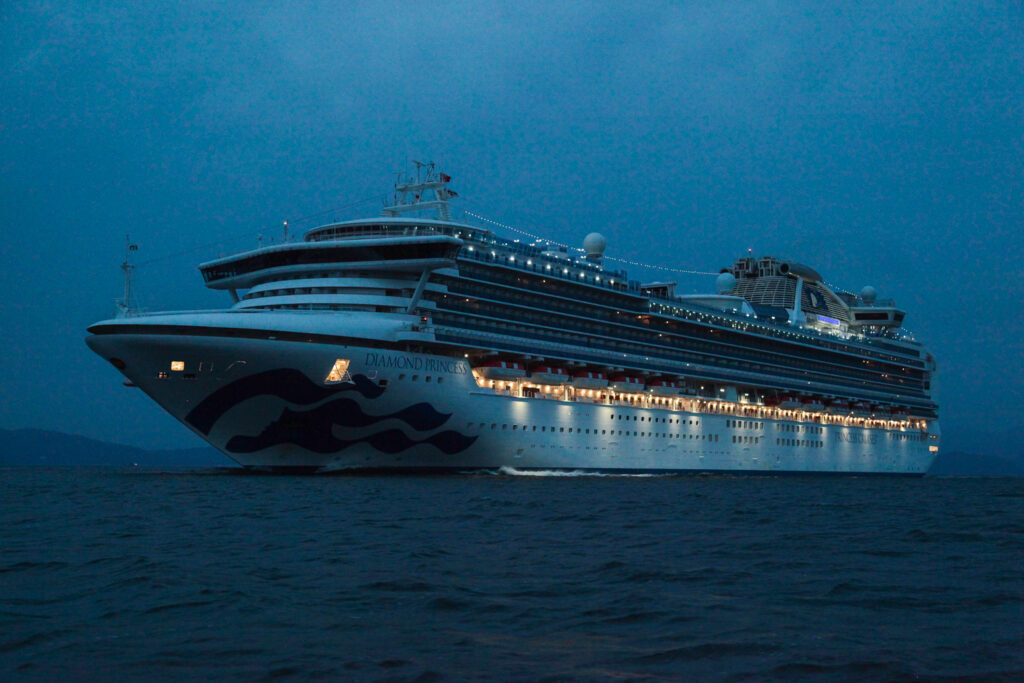
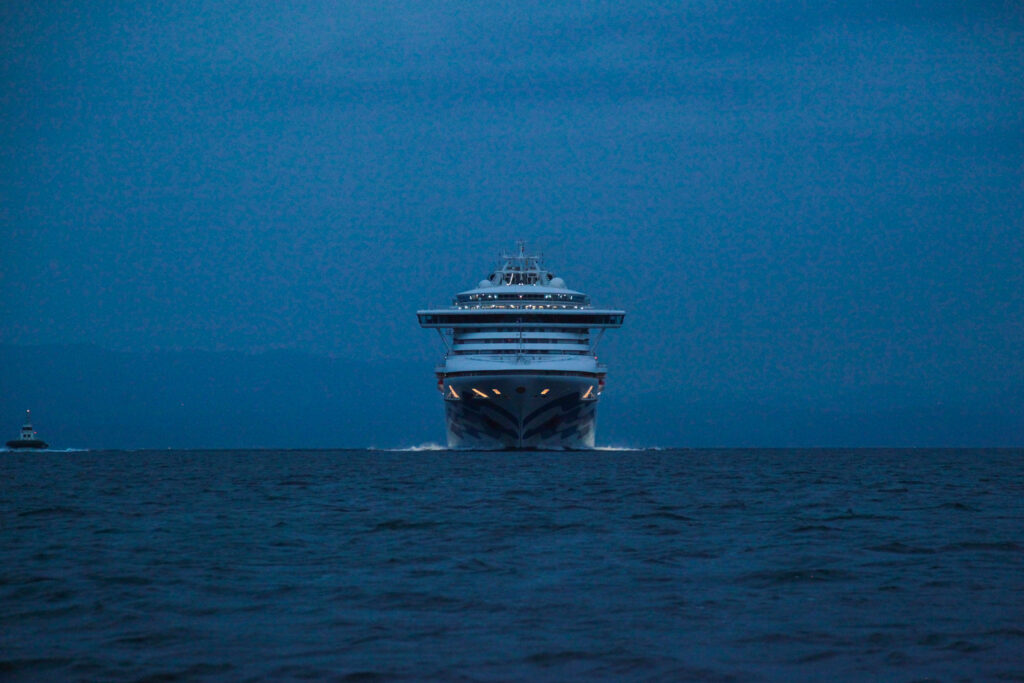
漁場に着くとひたすら海に潜って漁を始める。だいたい2~3時間で漁を終え、市場に持っていくそう。海に潜り、貝を採るのは、体を動かすゲームのような感覚で、遊びのように楽しみながら仕事ができているとか。
Upon reaching the fishing grounds, he began diving into the sea repeatedly to fish. He apparently finishes fishing in about two to three hours and takes the catch to the market. He mentioned that diving into the sea and collecting shellfish feels like a physical game to him, and he can enjoy his work as if he were playing.
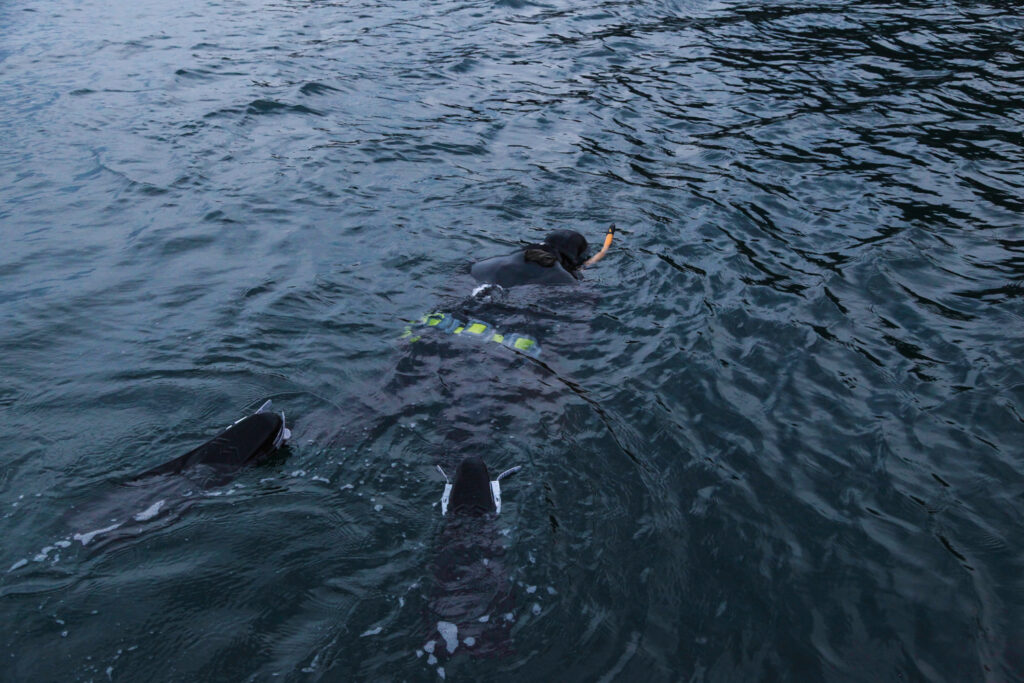
この日は普段よりも漁獲量が少なかったそう。
サザエなどは採っても良い大きさが決まっており、大きさに満たないものは海に返していた。
採れた貝類は、そのまますぐに市場を持っていく。その日のうちに競りにかけられ、店頭に並ぶ。競りには基本的に業者がきており、飲食店のオーナーなどが来て競りに参加することはほとんど無いそう。
舞鶴ではブランドさかなも多く「京鰆(きょうさわら)」「舞鶴かに」「舞鶴かき」などがある。観光に来た際には、ぜひ食も堪能して帰って欲しい。
また、京都府では漁師を目指す人を応援しており、講座の紹介もしている。
He mentioned that the catch was less than usual on this day.
For shellfish like turban shells (sazae), there are regulations on the minimum size that can be harvested, and those not meeting the size limit were returned to the sea.
The harvested shellfish are taken directly to the market. They are auctioned off the same day and appear in stores. Apparently, the auctions are mainly attended by industry professionals, and it’s rare for restaurant owners to participate directly.
Maizuru is also known for many branded seafood products such as “Kyo Sawara” (Kyoto Spanish Mackerel), “Maizuru Crab,” and “Maizuru Oyster.” When you visit for sightseeing, be sure to also enjoy the local cuisine.
Furthermore, Kyoto Prefecture supports aspiring fishermen and introduces relevant training courses.
